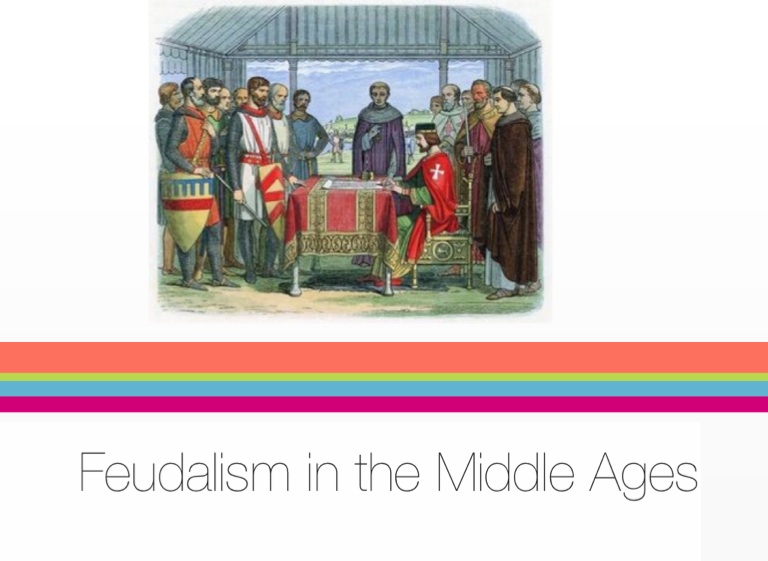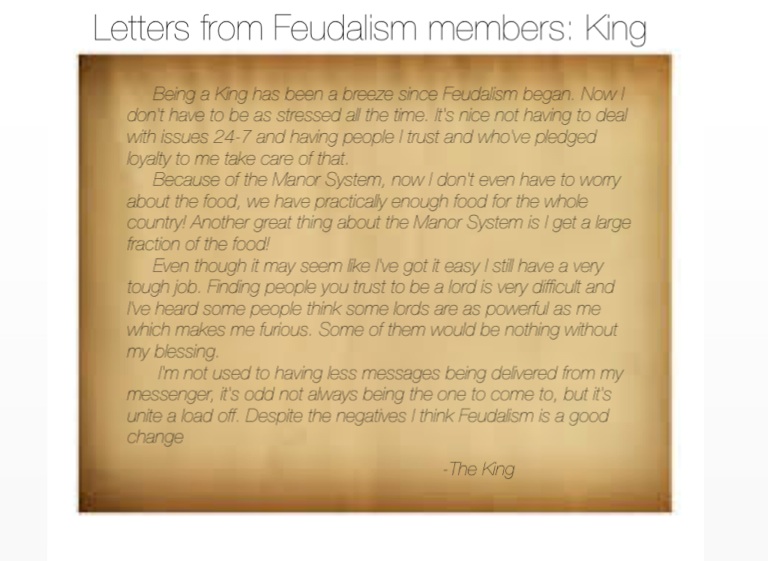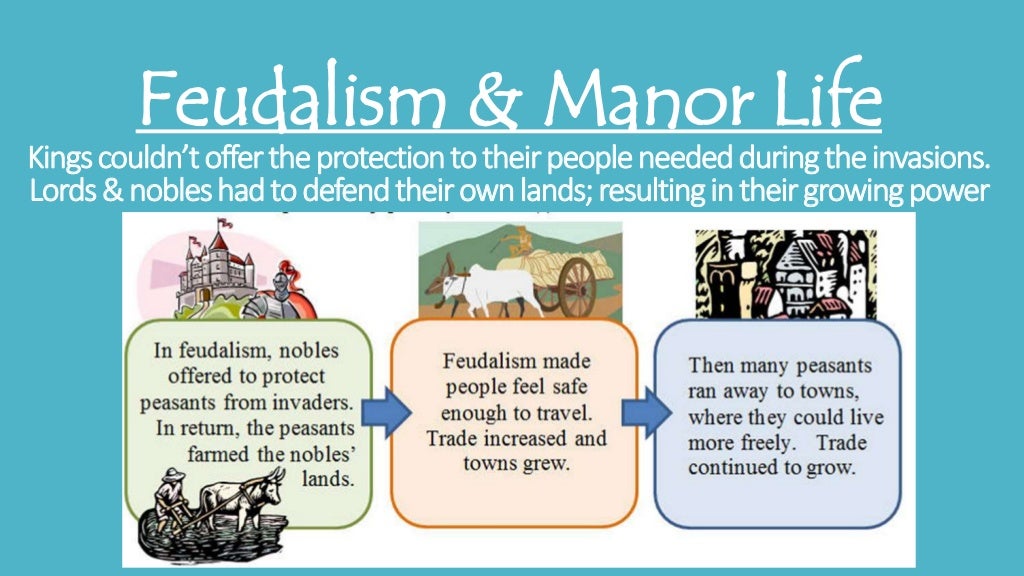
- Facts about feudalism in the middle ages full#
- Facts about feudalism in the middle ages free#
- Facts about feudalism in the middle ages windows#
The solar, or family room, remained on the first floor
Facts about feudalism in the middle ages windows#
In the 14th century the hall descended to the ground floor, and windows grew in size, indicating increased security. These halls were dimly lit, due to the need for massive walls with small windows for defence from attack. In the early medieval period the centre of life in castles and manors was the great hall, a huge, multipurpose chamber safely built upon the second floor. Smoke escaped by the way of louvres in the roof (at least in theory). There were no chimneys, and the fireplace was in the middle of the hall. Scraps were thrown on the floor for the dogs to finish. One trencher was used by two people, and one drinking cup. Meat was cut with daggers and all eating was done with the fingers from trenchers (hollowed-out husks of bread). Fruit juices and honey were the only sweeteners, and spices were almost unknown until after the Crusades. It must have had little effect on sobriety.

It was thin, weak, and drunk soon after brewing. Ale was the most common drink, but it was not the heady alcoholic drink we might imagine. Wine or ale was drunk, never water, which was rightly considered suspect. At a feast, spitted boar, roast swan, or peacock might be added. Meat, fish, pastries, cabbage, turnips, onions, carrots, beans, and peas were common, as well as fresh bread, cheese, and fruit.
Facts about feudalism in the middle ages full#
The fare at the lord's table was as full of variety as the peasant's was spare.
Facts about feudalism in the middle ages free#
The rest of the time the villagers were free to work their own land. Time might also be spent doing maintenance and on special projects such as clearing land, cutting firewood, and building roads and bridges. This land was shared out so that each person had an equal share of good and poor.Īt least half the work week was spent on the land belonging to the lord and the church.

The fields were further divided into strips 1/3 for the lord of the manor, less for the church, and the remainder for the peasants and serfs. A manor consisted of a manor house, one or more villages, and up to several thousand acres of land divided into meadow, pasture, forest, and cultivated fields. Manors, not villages, were the economic and social units of life in the early Middle Ages. If there were no heirs the lord disposed of the fief as he chose. If a daughter inherited, the lord arranged her marriage. On the lord's side, he was obliged to protect the vassal, give military aid, and guard his children. In a few days of Christmas feasting one year, William and his retinue consumed 6,000 chickens, 1,000 rabbits, 90 boars, 50 peacocks, 200 geese, 10,000 eels, thousands of eggs and loaves of bread, and hundreds of casks of wine and cider. William the Conqueror travelled with a very large household, and if they extended their stay it could nearly bankrupt the lord hosting them. This last obligation could be an onerous one. As well, he must feed and house the lord and his company when they travelled across his land.

He must answer a summons to battle, bringing an agreed-upon number of fighting men. The vassal was required to attend the lord at his court, help administer justice, and contribute money if needed. When a vassal died, his heir was required to publicly renew his oath of faithfulness (fealty) to his lord (suzerain).

A vassal held his land, or fief, as a grant from a lord. Feudalism was built upon a relationship of obligation and mutual service between vassals and lords.


 0 kommentar(er)
0 kommentar(er)
